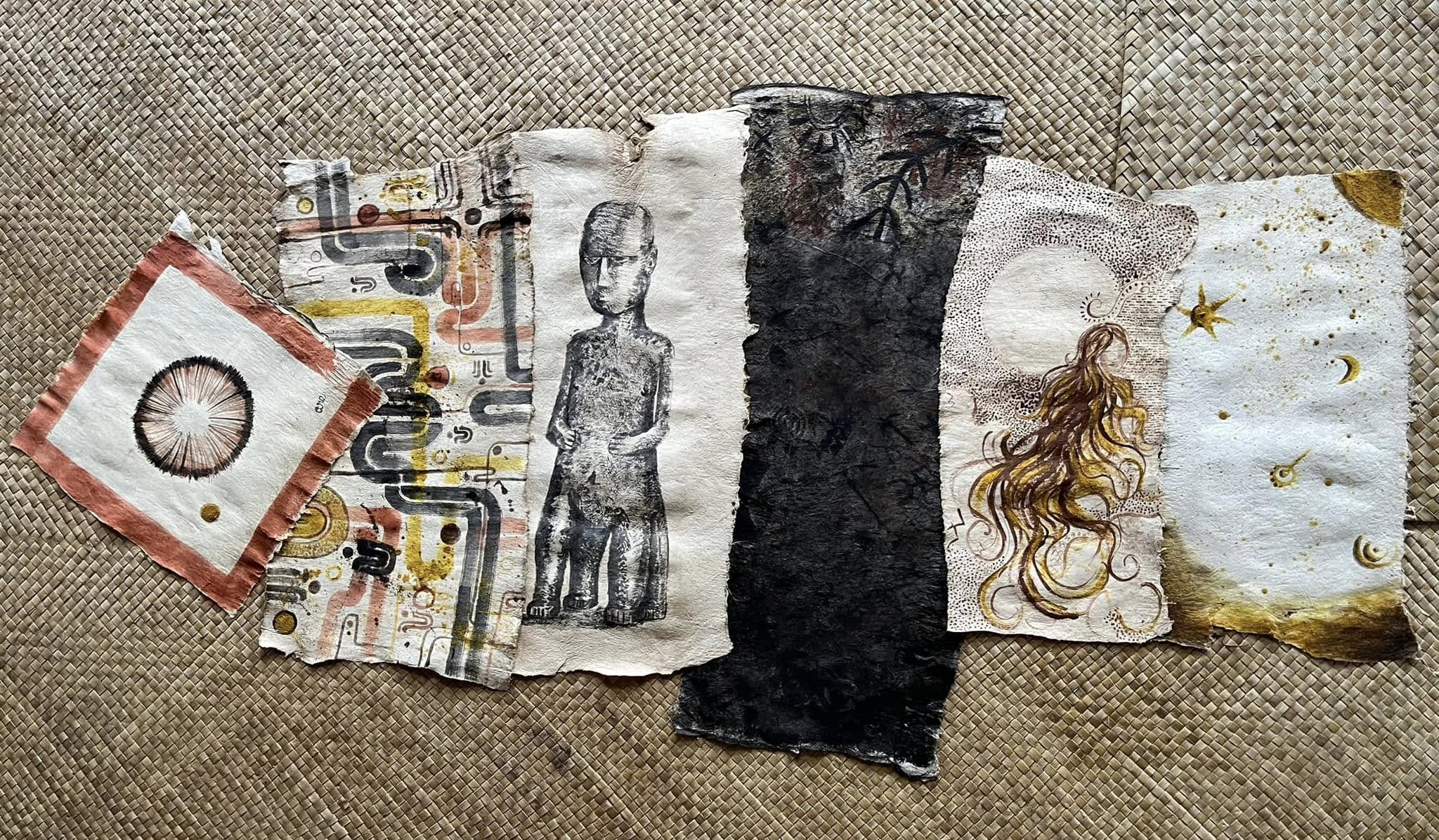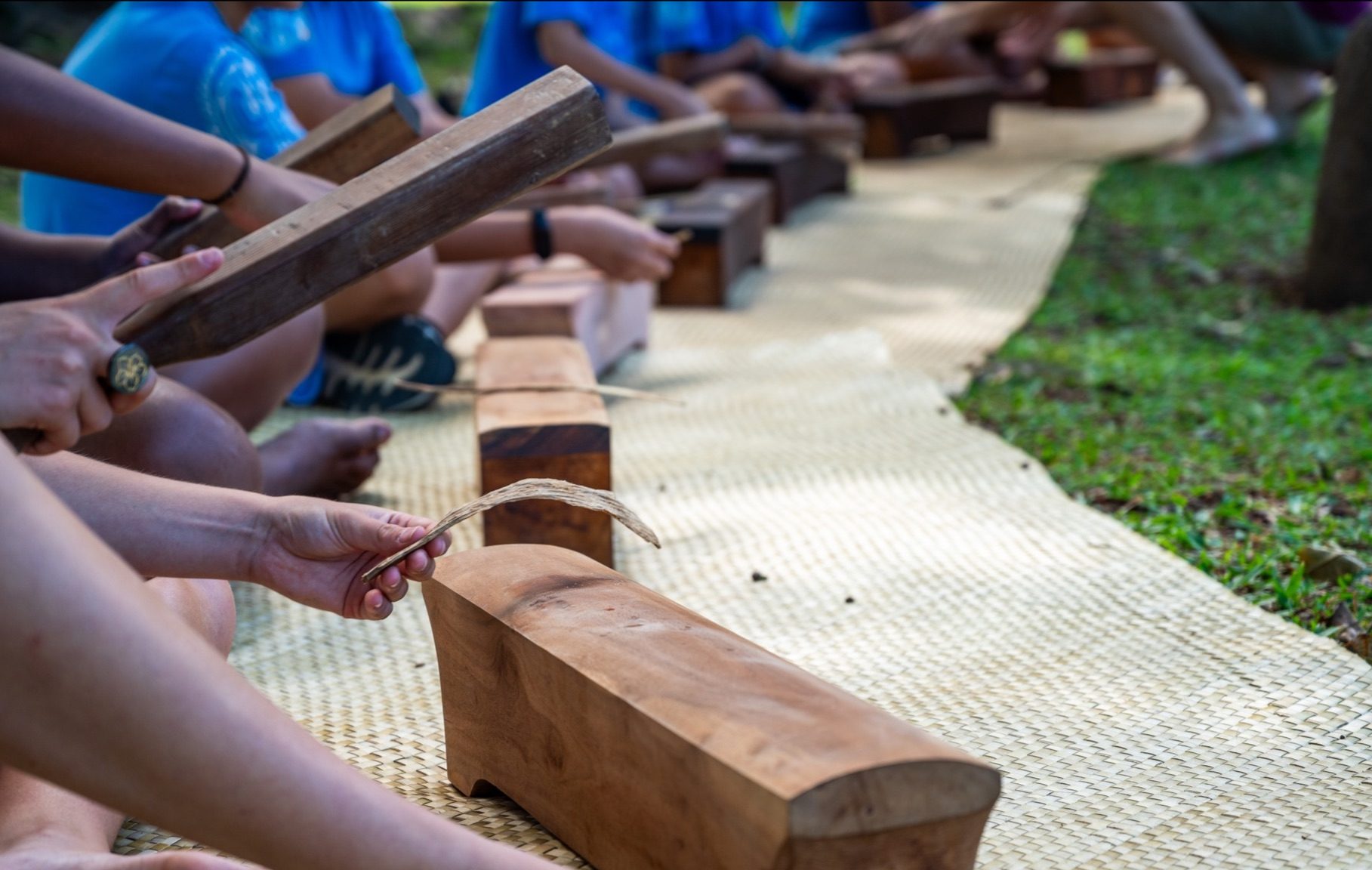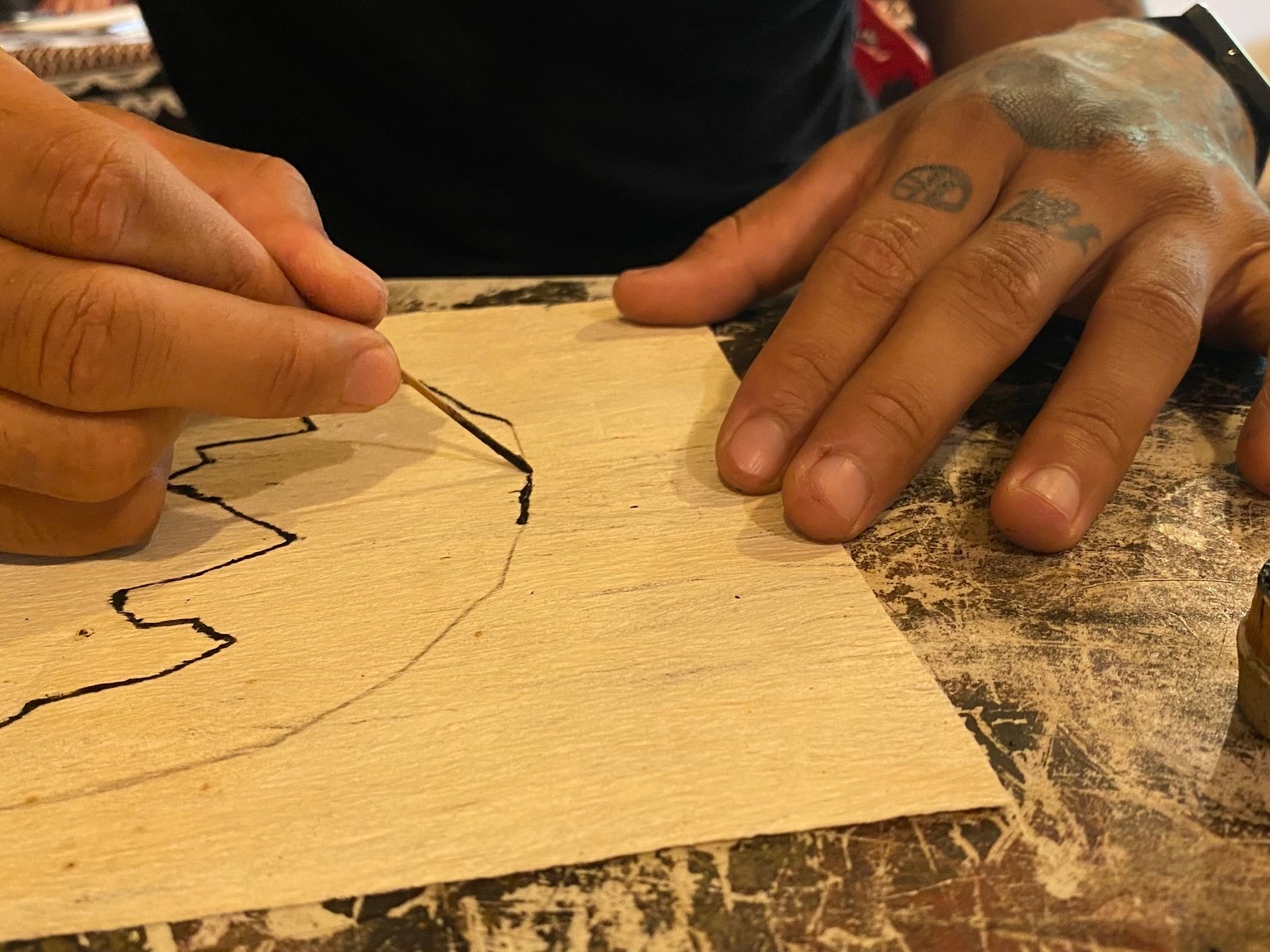Tapa, the Fabric of Life
Tapa cloth has long been the traditional fabric of the Polynesian islands, serving as a profound cultural artifact that embodies the artistry, history, and traditions of these communities.
Crafted from the inner bark of trees—most commonly paper mulberry, breadfruit, or banyan—tapa held a sacred place in Polynesian society. Its creation was a meticulous process that blended physical labor with artistic mastery, skills that were passed down through generations with deep reverence.
In ancient times, the craft of tapa-making was primarily undertaken by women, who transformed bark into a material integral to ceremonies, rituals, and daily life. Tapa was far more than just fabric; it was a powerful symbol of identity, social connection, and cultural pride.
The journey of creating tapa begins with the careful selection of young trees. Artisans strip away the outer bark to reveal the inner bark, peeling it off in long, fibrous strips. This inner bark is prized for its flexibility and strength, making it ideal for the creation of tapa. Sustainable harvesting practices ensure that the trees can regenerate their bark over time, reflecting the community’s deep respect for nature and its resources.
After harvesting, the bark strips are soaked in water to soften them, preparing the fibers for the next step: beating. This labor-intensive process involves placing the softened bark on a wooden anvil and pounding it with grooved mallets. The repeated beating interlaces the fibers, expanding the bark into thin, even sheets. The grooved mallets not only help spread the fibers but also add a textured character to the finished fabric.
To create larger sheets of tapa, smaller pieces are overlapped and beaten together until the fibers fuse seamlessly. This technique requires no adhesives and results in a unified, durable cloth. Symbolically, this process reflects the interconnectedness of the community—individual pieces coming together to form something whole and meaningful.
The completed sheets are then laid out in the sun to dry. Once dry, the plain tapa is transformed into a work of art. Using natural dyes made from plants, minerals, and charcoal, artisans decorate the cloth with intricate designs. Traditional motifs often feature geometric patterns, symbols, and depictions of plants and animals, each telling a story deeply rooted in the culture and environment of the region.
Beyond its functional and ceremonial uses, tapa is a beautiful and meaningful gift, cherished for its cultural significance and artistic value.
The Marquesas Islands have played a vital role in preserving the tradition of tapa-making, and they remain one of the best places in The Islands of Tahiti to find authentic tapa cloth today.
Through its enduring legacy, tapa continues to connect Polynesians to their ancestors, their community, and the natural world, embodying the essence of their heritage in every fiber.
*** Photo credit: Arioi Cultural Center



